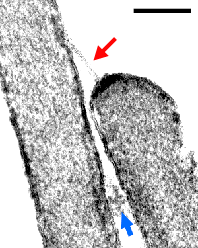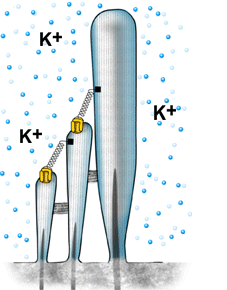Animation
When stereocilia are bent toward
the stria vascularis, K+ enters the channel and depolarises the
cell.
The closure
of channels occurs prior to a return of stereocilia to
their initial position. This adaptation mechanism is activated
by Ca2+ (its internal concentration upregulates when channels
are open) which triggers a motor protein (myosin VIIa, ref.
c6)
which drives down the tip links.
This mechanism
reduces the time constant of channel opening, thus allowing cycles
of mechano-transduction to occur in rapid succession i.e. at high
frequencies (ref.
c4) |



